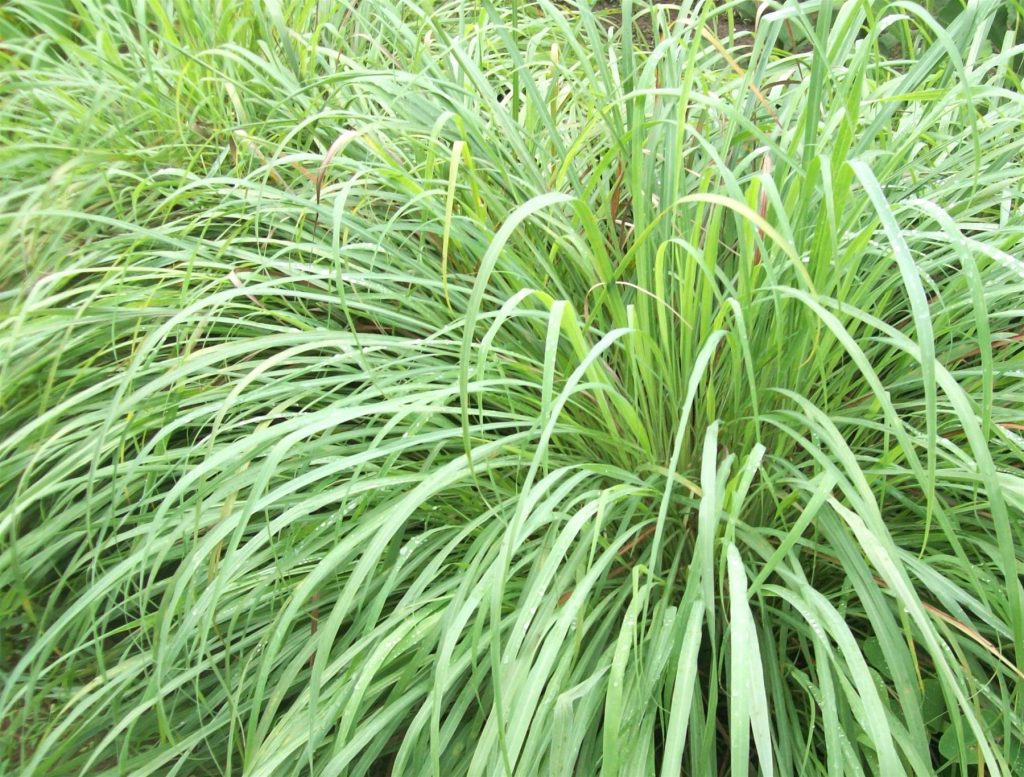When Secretary Emmanuel Piñol of Mindanao Development Authority visited the vegetable growing region of Bukidnon recently, he observed that native Talaandig farmers were using a wild shrub which drives away mites and lice in chicken.
Ryan Danio, a Talaandig farmer leader, said the shrub is locally known as gentong, adding they placed the mint-scented leaves in the nests of brooding hens to get rid of mites and lice – and it works.
When Piñol inquired if they use gentong, too, as a method of driving away insects and worms from their vegetable fields, Danio replied that they have not tried it yet. Instead, they relied on chemical pesticides and insecticides.
“Uncontrolled and unsupervised, the excessive use of chemical pesticides and insecticides could result in very high residue levels which could endanger human health,” Piñol wrote in his Facebook account.

The reason why he asked Danio was because he brought with him a sack of the Java variety of citronella, a grass similar to lemon grass which is used to produce mosquito repellants. These were planted in the area and encouraged farmers to identify places where the gentong shrub grows.
Piñol was thinking of concocting an herbal solution which he would experiment on vegetables to check its effectiveness in driving away insects and pests. Aside from gentong and citronella, other probable raw materials include cosmos flower, neem tree leaves, oregano, basil and lemon grass.
“We will extract natural oil and hydrosol from these materials which then would be sprayed on vegetables to check if the formula could drive away insects and pests,” said Piñol, who was formerly the secretary of the Department of Agriculture.
“These early, we cannot say if it will work effectively but there is no harm in trying and it is worth trying,” he pointed out. “If proven effective, this could give more value to the vegetables produced by farmers as it will have fewer chemical residues. Most of all, it will ensure safe and healthy vegetables for Filipinos.”
The Rome-based UN Food and Agriculture Organization (FAO) estimates that up to 35% of the losses in annual crop production worldwide are due to pests – insects, weeds, plant diseases, rodents, and birds. Of the estimated one million insects in the world, between 150 to 200 species frequently cause serious damage to crops.
When losses due to pests are combined together with post-harvest losses, worldwide food losses would amount to 45%. “This is almost one half of the world’s potential food supply,” FAO surmised.
To annihilate pests, most farmers use pesticides. The Fertilizer and Pesticides Authority defines pesticide as “any substance or mixture of substances intended for preventing, destroying, repelling, or mitigating any insects, rodents, nematodes, fungi or weeds, or any other form of life declared to be pest.” It also refers to “any substance or mixture of substances intended for use as a plant regulator, defoliant, or desiccant.”
Pesticides are classified according to their degree of danger. The pesticide’s label should give a warning notice in the shape of a symbol. Skull and crossbones on the label mean that the pesticide is extremely or highly toxic. A highly toxic pesticide may be lethal when an adult ingests less than a teaspoon.
For a long time, no one seemed to question the safety of pesticides. It was not until 1962, when marine biologists and writer Rachel Carson wrote the now classic Silent Spring. In her book, she described how pesticides cause long-term hazards to birds, fish, other wildlife, and humans, but provides only short-term gains to controlling the pests.
“Pesticides are like bombs being dropped in the food web creating enormous destruction,” said Dr. K. L. Heong, an entomologist who once worked with the International Rice Research Institute (IRRI).
Unknowingly, pesticides are killing more than just the pests. “Some pesticides harm the living organisms other than the targeted pests,” noted the Davao-based Technical Assistance Center for the Development of Rural and Urban Poor. “Some travel to the food chain to bioaccumulate in higher organisms.”
In their book, Pesticides and You, Gretta Goldenman and Sarojini Rengam explain that pesticides concentrated even to toxic levels via the food chain. Thus, an increased feeding on plants sprayed with pesticides might be eaten by another insect which might be eaten by a bird. “Traces of pesticides too small to kill the targeted pest can accumulate to levels high enough to harm species further on up the food chain,” the authors warn.
Health experts claim pesticides can enter the human body through the lungs, digestive system, or skin. Depending on the kind of pesticide, health effects can be immediate (acute) or they can occur after years of low-level exposure.
Generally, acute poisoning occurs after an accident such as pilling a bottle of pesticide on the skin or drinking from a bottle containing pesticides. The symptoms of acute poisoning occur within 24 hours: vomiting, headache, respiratory problems, and heart failure, among others.
Long-term effects of pesticides include skin disorders, damage to internal organs (particularly liver, kidneys, and lungs), increased sensitivity to pesticides and effects on the progeny.
“Every year, hundreds of thousands of people are killed due to accidental poisoning by agricultural chemicals,” said Jethro P. Adang, director of the Davao-based Mindanao Baptist Rural Life Center Foundation, Inc.
The Geneva-based World Health Organization (WHO) reports that three people are poisoned by pesticides every minute around the world. All in all, about 10,000 die annually to pesticides.
“The health hazards associated with pesticide use have been known for years and the extent of harm they cause has increased, yet, chemical companies keep on pouring millions of tons of pesticides annually into the world’s biosphere,” deplored Dr. Romeo F. Quijano, a professor at the University of the Philippines College of Medicine.
The lack of regulation in most developing countries often accounts for the importation of banned pesticides. In some instances, farmers try to apply untested chemicals which they think could drive away insects and pests. In 1992, the illegal use of cyanide compounds by cabbage farmers in the Cordillera region provoked a public outcry.
In time, the use of botanical pesticides again gains wider acceptance among farmers. Botanical pesticides are derived from plants which have been shown to have insecticidal properties. Used widely until the 1940’s, these natural pesticides were displaced by modern synthetic pesticides that at the time seemed cheaper, easier and longer lasting.
“The increasing awareness of the dangers posed by chemical pesticides to human health is prompting many Filipino farmers to use botanical formulations that they themselves are preparing,” said a paper written by L. Masana and A. Manuel.
“Natural pest controls like the botanicals are safer to the user and the environment because they break down into harmless compounds within hours or days in the presence of sunlight,” wrote Eric Vinje in an article which appeared in Planet Natural. “They are also very close chemically to those plants from which they are derived, so they are easily decomposed by a variety of microbes common in most soils.”
Many plants have insecticidal properties. Extracts of these plants can be sprayed on the crop to either kill or repel insects. “Kakawate” (Gliricidia sepium) is one good example. FAO reports that “kakawate” leaves contain coumarin, which can be converted into an anticoagulant discoumerol found to be an efficient rat killer.
Aside from rodents, “kakawate” also acts potently on insects. In many countries, its leaves are placed in chicken runs, or left to soak in hot water and used to eliminate fleas and lice on domestic animals.

Many other plants can also be used to prepare extracts with pesticidal properties. A mixture of garlic, onion, marigold, and hot pepper (siling labuyo) can annihilate a wide range of insect pests.
One Filipino farmer who believes in using botanical pesticides is Benjamin Lao, owner of the Lao Integrated Farms, Inc in Eman, Bansalan, Davao del Sur. “I had a tragic experience with chemical pesticides when I was still a teenager while cultivating rice in our farm located at the neighboring barangay,” he reasoned out why he uses botanical pesticides in his farm.

He applies what he calls as Eman, which stands for “epektibo, mura, at natural” (effective, cheap, and natural). “This is a concoction composed of fresh goats’ manure, kakawate, makabuhay, and hot pepper,” he informed. “These are soaked together for 48 hours and after that the concoction is ready for application.”
According to him, Eman is effective in repelling plant pests and diseases. In addition, it is also a good course of foliar fertilizer. “We are committed to help preserve our environment. We want to teach Filipino farmers the right way of farming through natural methods and that is by not using commercial fertilizer or pesticides,” he said.






